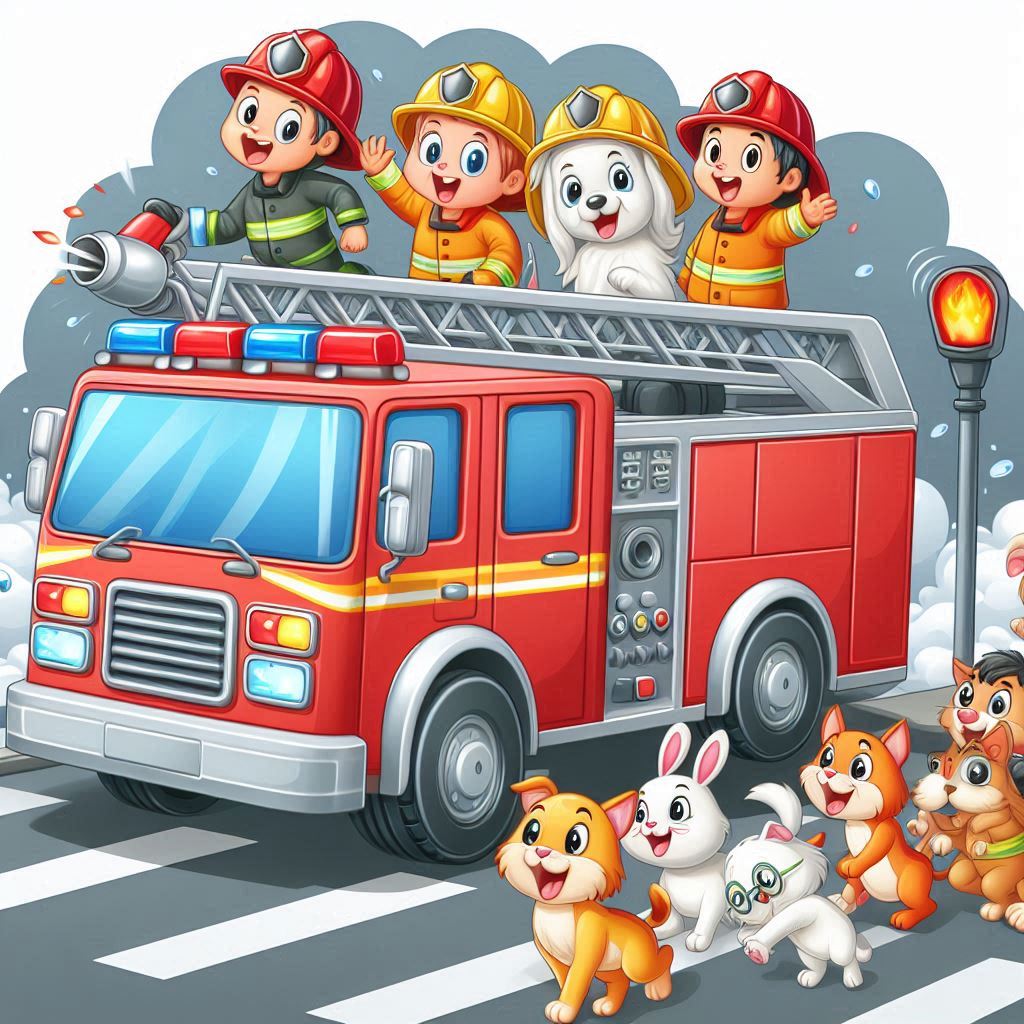
As a seasoned blogger in the field of emergency services, I’ve always been fascinated by the intricate details that go into ensuring the safety and efficiency of our firefighters. One crucial aspect that often goes unnoticed is the real costs associated with fire trucks. In this article, I’ll delve deep into the expenses involved in procuring, maintaining, and operating these essential vehicles.
From initial purchase prices to ongoing maintenance and repair expenses, the financial implications of owning a fire truck can be significant. Understanding these costs is vital for fire departments to make informed decisions that align with their budgetary constraints while prioritizing the safety of their communities. Join me as we uncover the true expenses behind these iconic red vehicles and gain valuable insights into the real costs of fire trucks.
Key Takeaways
- Customization, size, features, brand, and NFPA compliance significantly influence the initial purchase price of fire trucks.
- Regular maintenance, inspections, high-quality replacement parts, training programs, and emergency repair protocols are crucial for managing ongoing maintenance costs effectively.
- Fire departments should prioritize proactive maintenance, invest in quality parts, provide continuous training, and have emergency protocols in place to minimize repair expenses over time.
- Factors like the quality of replacement parts, maintenance frequency, firefighter training, and emergency repair protocols play a significant role in determining the total cost of ownership for fire trucks.
Types of Fire Trucks and Their Costs
- Pumper Trucks:
- Cost: $300,000 to $600,000
- Description: Designed for firefighting and equipped with hoses and water tanks.
- Ladder Trucks:
- Cost: $750,000 to $1.5 million
- Description: Equipped with extendable ladders for reaching high places, typically used for rescues and extinguishing fires in tall buildings.
- Rescue Trucks:
- Cost: $400,000 to $1 million
- Description: Used for emergency medical services and technical rescues, equipped with specialized tools.
- Tankers:
- Cost: $300,000 to $800,000
- Description: Carry large volumes of water to areas without hydrants, important in rural settings.
- Brush Trucks:
- Cost: $200,000 to $400,000
- Description: Designed for wildland firefighting, often smaller and more maneuverable.
Factors Affecting Cost
- Specifications: Custom features, such as specialized equipment or enhanced safety features, can increase costs.
- Brand and Model: Different manufacturers have varying price points based on quality and design.
- Local Regulations: Some jurisdictions may require specific features or certifications, impacting the price.
- Maintenance and Upgrades: Initial costs do not include ongoing maintenance, which can add significantly to overall expenditures.
Here’s a table outlining some of the prominent fire truck brands in the USA, along with estimated prices and specific features:
| Brand | Type of Trucks | Price Range | Specifications/Features |
|---|---|---|---|
| Pierce Manufacturing | Pumper, Ladder, Rescue | $350,000 – $1.5 million | Custom configurations, advanced pump systems, ergonomic designs. |
| E-One | Pumper, Ladder, Rescue | $300,000 – $1.2 million | High-performance chassis, lightweight materials, versatile designs. |
| Spartan Emergency Response | Pumper, Rescue | $300,000 – $700,000 | Modular designs, advanced safety features, customizable layouts. |
| Mack Trucks | Tankers, Pumper | $400,000 – $800,000 | Robust construction, powerful engines, designed for rough terrains. |
| KME | Pumper, Ladder, Rescue | $325,000 – $800,000 | Custom-built options, high-capacity water tanks, maneuverable. |
| Ferrara Fire Apparatus | Pumper, Ladder, Tankers | $350,000 – $1.2 million | Advanced lighting systems, high safety standards, customizable options. |
| Smeal Fire Apparatus | Ladder, Pumper | $400,000 – $1 million | Innovative designs, high pump capacity, customizable features. |
| HME | Pumper, Rescue | $300,000 – $700,000 | Functional design, high-capacity roofs, enhanced visibility. |
Notes:
- Prices are estimates and can vary based on specific configurations and additional features.
- Many brands offer extensive customization options, allowing fire departments to tailor vehicles to their specific needs.
- For accurate and detailed specifications, it’s advisable to consult directly with the manufacturers or authorized dealers.
This table provides a general overview of the market for fire trucks in the USA, reflecting the diversity in offerings tailored to meet the unique needs of fire departments.
The Initial Purchase Price of Fire Trucks
When it comes to the initial purchase price of fire trucks, it’s crucial to consider various factors that can impact the total cost. Here are some key points to keep in mind:
- Customization: Fire departments often need to customize their trucks to meet specific requirements, which can significantly add to the base price.
- Size and Features: The size of the truck, as well as additional features such as firefighting equipment, technology, and safety systems, can influence the overall cost.
- Brand and Model: Different brands and models of fire trucks come at varying price points, depending on factors like durability, reliability, and innovative features.
- NFPA Compliance: Ensuring that the fire truck meets National Fire Protection Association (NFPA) standards may require additional investments to adhere to regulations.
It’s essential for fire departments to carefully evaluate their needs and budget constraints when deciding on the purchase of a new fire truck. By understanding the intricacies of the initial costs involved, organizations can make informed choices that align with their operational requirements.

Ongoing Maintenance Costs
When considering fire trucks, it’s crucial to factor in ongoing maintenance costs to ensure the vehicle remains in optimal working condition. Here are key points to keep in mind:
- Regular Inspections: I always emphasize the importance of scheduled inspections to identify any issues early on and prevent costly repairs down the line.
- Routine Maintenance: I recommend sticking to a strict maintenance schedule that includes oil changes, brake checks, and tire rotations to extend the lifespan of the fire truck.
- Replacement Parts: It’s essential to source high-quality replacement parts to maintain the performance and safety standards of the vehicle.
- Training Programs: Investing in training programs for firefighters on proper fire truck maintenance can help minimize wear and tear, ensuring the longevity of the vehicle.
- Emergency Repairs: Being prepared for unexpected breakdowns is key. Establishing protocols for emergency repairs can reduce downtime and keep the fire truck operational.
By staying proactive and budgeting for ongoing maintenance costs, fire departments can keep their fire trucks in top condition, ready to respond to emergencies effectively. A well-maintained fire truck not only enhances operational efficiency but also promotes firefighter safety.
Repair Expenses Over Time
When it comes to Repair Expenses Over Time for fire trucks, it’s crucial to understand that these costs can add up significantly. As fire trucks age, they become more prone to wear and tear, requiring more frequent repairs and replacements.
Regular maintenance is key to extending the lifespan of fire trucks and reducing repair expenses in the long run. By conducting routine inspections and addressing any issues promptly, fire departments can catch small problems before they escalate into costly repairs.
Investing in high-quality replacement parts can also contribute to lower repair expenses over time. While these parts may come at a higher initial cost, they are often more durable and reliable, reducing the likelihood of premature failures that can lead to additional repairs.
Training programs for firefighters on proper vehicle maintenance can further help in minimizing repair expenses. By ensuring that firefighters are equipped with the knowledge and skills to identify potential issues early on, fire departments can prevent costly breakdowns and extend the lifespan of their fire trucks.
Establishing protocols for emergency repairs is essential for keeping repair expenses under control. By having a plan in place for addressing unexpected breakdowns swiftly, fire departments can minimize downtime and ensure that their vehicles are back in service as soon as possible.
In conclusion the costs of repairs can be managed and minimized through proactive maintenance, investment in quality parts, ongoing training, and preparedness for emergency repairs.
Factors Influencing the Total Cost of Ownership
When looking into the total cost of ownership for fire trucks, there are several key factors that play a significant role in determining expenses. Here are some crucial aspects to consider:
- Quality of Replacement Parts: Opting for high-quality replacement parts may come with a higher upfront cost but can lead to long-term savings by reducing the frequency of repairs and replacements.
- Frequency of Maintenance: Regular maintenance is essential to keep fire trucks operating at their best. By adhering to a consistent maintenance schedule, fire departments can prevent costly breakdowns and extend the lifespan of their vehicles.
- Training Programs for Firefighters: Providing training programs for firefighters on proper vehicle maintenance can help identify minor issues before they escalate, reducing the need for extensive repairs down the line.
- Emergency Repair Protocols: Establishing clear protocols for emergency repairs can minimize downtime and ensure that fire trucks are quickly back in service. This proactive approach can help reduce overall repair costs over time.
Efficiently managing these factors can have a significant impact on the total cost of ownership of fire trucks, enabling fire departments to allocate resources effectively and maintain operational readiness.
Conclusion
Considering the various factors affecting fire truck costs, it’s crucial to prioritize quality parts, regular maintenance, firefighter training, and emergency repair procedures. By managing these elements efficiently, fire departments can optimize their resources, ensuring operational readiness and minimizing repair expenses in the long run.
